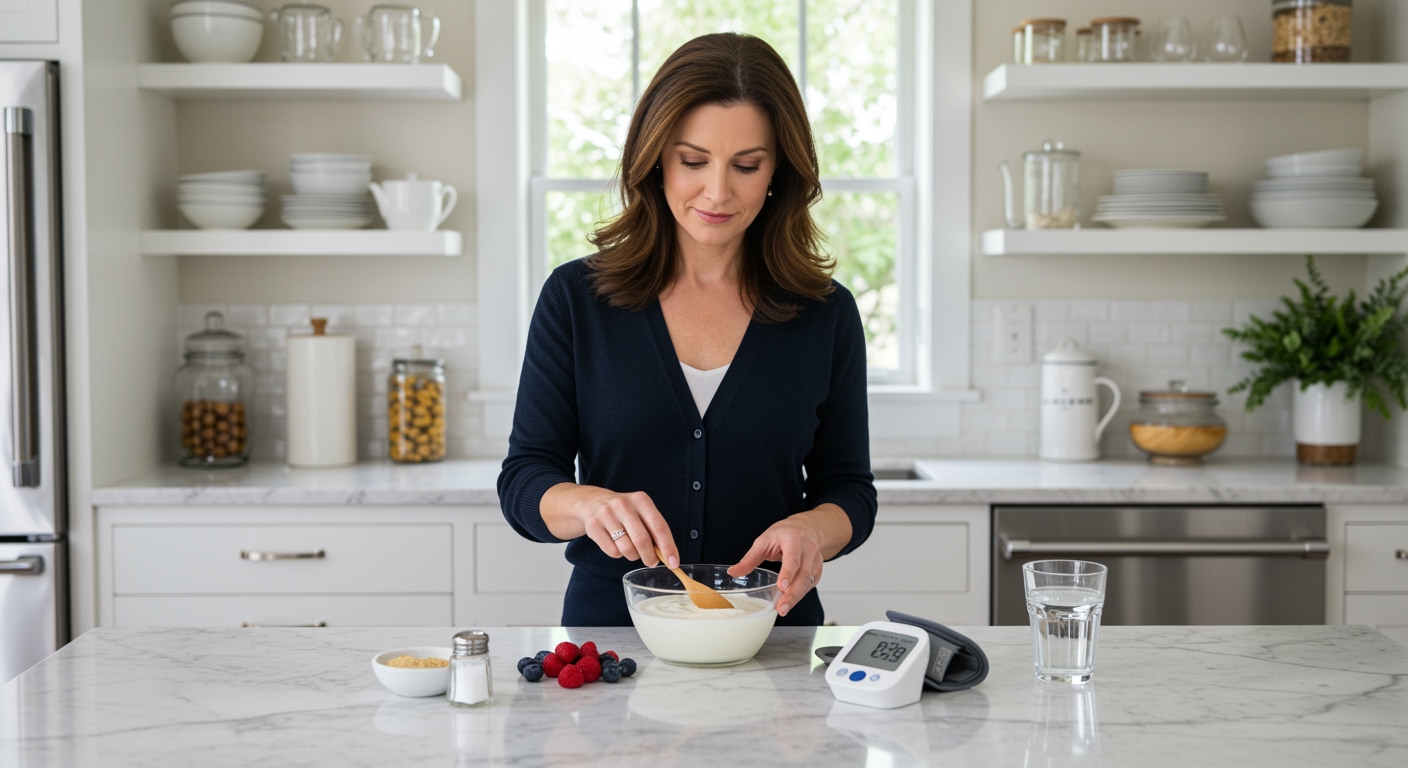✪ Key Takeaway: Celery can lower blood pressure further, making it risky for people with hypotension who should limit intake.
Introduction
Your doctor just told you that your blood pressure is too low, and now you are wondering about every food choice you make.
You have heard that celery can affect blood pressure, but you are not sure if this crunchy vegetable will help or harm your condition.
Hi, I am Abdur, your nutrition coach, and today I am going to explain exactly how celery affects low blood pressure and what you need to know to stay safe.
How Does Celery Actually Lower Blood Pressure?
Celery contains powerful compounds called phthalides that directly affect your cardiovascular system.
These natural chemicals work by relaxing the smooth muscles in your blood vessel walls.
When these muscles relax, your blood vessels become wider, which allows blood to flow more easily through your body.
This process is called vasodilation, and it naturally reduces the pressure inside your arteries.
Research shows that eating just four celery stalks daily can reduce systolic blood pressure by 12-14 points in people with normal or high blood pressure.
The problem starts when your blood pressure is already below normal levels, typically under 90/60 mmHg.
Your body needs adequate pressure to pump blood to all your organs, especially your brain, and celery can push these numbers even lower into dangerous territory.
✪ Fact: Phthalides in celery remain active in your system for up to 8 hours after consumption.
What Happens When Your Blood Pressure Drops Too Low?
Low blood pressure, medically known as hypotension, creates serious problems when your organs do not receive enough oxygen-rich blood.
Your brain is the first organ to suffer because it sits at the top of your body and requires constant blood flow to function properly.
When celery further reduces your already low blood pressure, you may experience dizziness, lightheadedness, or fainting within 30-60 minutes of eating it.
Your heart tries to compensate by beating faster, but this creates additional stress on your cardiovascular system.
Some people also experience blurred vision, nausea, or confusion when their blood pressure drops too dramatically.
These symptoms occur because your body is struggling to maintain adequate circulation to vital organs.
The danger increases if you are taking medications for other conditions, as celery can amplify the blood pressure-lowering effects of certain drugs.
✪ Pro Tip: Monitor your blood pressure for 2 hours after eating celery to track its effects on your body.
Should You Completely Avoid Celery With Hypotension?
Complete avoidance is not always necessary, but you need to be extremely cautious about timing and quantity.
If your blood pressure readings consistently stay above 85/55 mmHg, you might tolerate small amounts of celery occasionally.
Start with just one small stalk and monitor your symptoms for at least two hours afterward.
Never eat celery on an empty stomach when you have low blood pressure, as this can cause more dramatic drops.
Avoid celery juice completely because it contains concentrated amounts of phthalides that can cause rapid blood pressure drops.
Pay attention to your body signals, and stop eating celery immediately if you feel dizzy, weak, or nauseous.
Consider eating celery with salty foods that can help counteract its blood pressure-lowering effects, but discuss this approach with your healthcare provider first.
✪ Note: Cooked celery has slightly less phthalide activity than raw celery but still affects blood pressure.
What Foods Should You Choose Instead?
Focus on foods that can help stabilize or gently raise your blood pressure without causing dangerous spikes.
Salt becomes your friend when you have hypotension, so choose naturally salty foods like olives, pickles, or cheese in moderation.
Drink plenty of water throughout the day because dehydration worsens low blood pressure symptoms significantly.
Caffeine can provide temporary blood pressure increases, so consider having coffee or tea when you feel symptoms developing.
Choose complex carbohydrates like oatmeal or whole grain bread that provide steady energy without causing blood sugar crashes.
Small, frequent meals work better than large meals because digestion can temporarily lower blood pressure further.
Include lean proteins like chicken, fish, or eggs that help maintain stable blood sugar and energy levels throughout the day.
✪ Pro Tip: Eat a small salty snack 30 minutes before standing for long periods to prevent dizziness.
The Bottom Line
Celery is not safe for people with low blood pressure because it can push already dangerous readings even lower.
When your blood pressure is low, every food choice becomes a health decision that requires careful consideration.
I would love to hear about your experiences with celery and low blood pressure, so please share your thoughts or questions in the comments below.
References
At NutritionCrown, we use quality and credible sources to ensure our content is accurate and trustworthy. Below are the sources referenced in creating this article:
- Vinmec: Does Celery Juice Lower Blood Pressure?
- RESPeRATE: Celery for High Blood Pressure
- PMC: Celery and Blood Pressure Research
- Cleveland Clinic: Is Celery Good for You?





